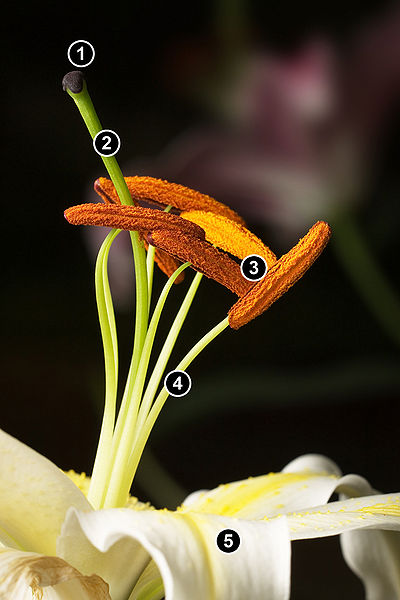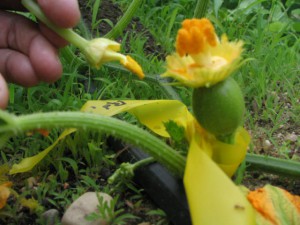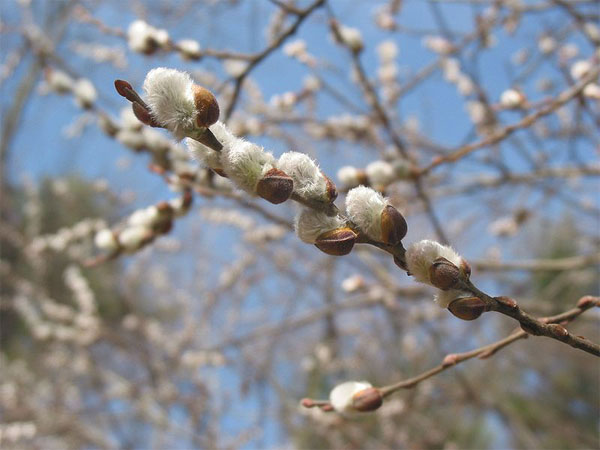Flower Types

Figure 7.20: Christmas Lillium (Lilium longiflorum). 1. Stigma, 2. Style, 3. Stamens, 4. Filament, 5. Petal. The lily variety pictured displays both the female and male reproductive parts, therefore it is “perfect”.
Image from URL: http://en.wikipedia.org/wiki/File:Lillium_Stamens.jpg
Within the angiosperms, adaptations and exceptions to the rule are almost the norm when one examines the reproductive parts of plants. Some plants may have all the flower parts previously listed: stamen; pistil; sepals; and petals. In which case, those flowers are considered complete.
Plants that have all the critical reproductive parts (pistil and stamen), but lack sepals or petals are still considered to be perfect. Perfect flowers can self-pollinate and do not require the help of a pollinator. A few examples of perfect flowers are lilies, peppers and tomatoes.
Click here for more images of the difference between perfect and complete flowers from the Oregon State University Extension Service.
Flowers that are imperfect, that is, have only male or only female parts, can be found on plants that are either monoecious or dioecious. Monoecious plants are plants that have both the male and female flowers on one plant. The individual flowers lack one of the reproductive parts, but both types of flower are contained on the same plant. Often, the male flower will bloom first, followed by the female flower. A garden example of a monoecious plant is squash. Timing is critical for monoecious squash plants as the male flowers emerge first and will begin to droop within hours. Within a few days (or weeks depending on variety), the female flower will emerge. Pollination of the female flower must begin immediately, and it must be pollinated at least three times in order to produce viable squash.

Figure 7.21: The flower on the right is the female squash flower, identified by the stigmas and bulbous ovary. The flower on the left, in the gardener’s hand, is the male flower with only the stamen (both flowers have had the corolla removed for hand pollination).
Image from URL: http://commons.wikimedia.org/wiki/File:Western_Meadowlark.jpg
The dioecious plants have only one type of flower, either male or female, on an individual plant. Male flower plants, also known as staminate plants, have flowers with only stamens, as their name implies. On the other hand, female flower plants are called pistillate, meaning containing only pistils. Common examples of dioecious plants are willow, poplar, asparagus, and holly. Although there are many varieties of willow in Montana, most people think of “pussy willow” and “weeping willow” when recalling images of willows or willow trees. The pussy willow that is found in floral arrangements is actually the male flower of the willow and is referred to as a catkin.
Flowers are further described by their location on the plant stem. Axillary flowers are situated in the junction of the stem and leaf, while terminal flowers are located at the end of a stem.
